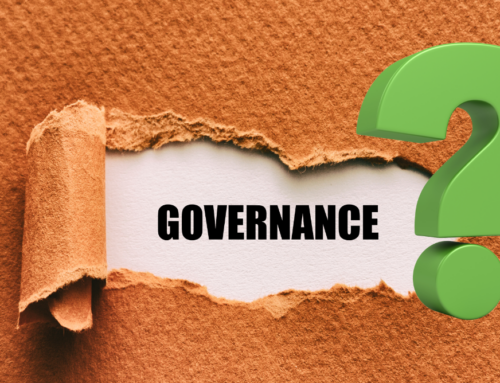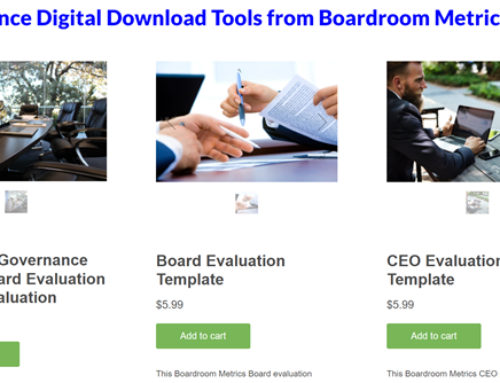Three Steps to Evaluate Your Board and Save Your Organization
Ok. That last part of the title probably seems over the top. But it’s not.
The field of corporate governance is strewn with organizations that failed because their Boards let them down.
Many of those Boards were doing Board evaluations. The evaluations just weren’t effective. Here’s how to change that.
First, get the Board’s role right and evaluate it.
There are three elements to the role of the Board: identify and mitigate risk, lead the strategic direction of the organization and provide the best CEO.
Here’s how to evaluate how well the Board is doing its role:
- The Board has identified the risks facing the organization, evaluated them and provided strategies for mitigating those risks. Yes? No?
- The Board has clearly defined strategies for achieving the organization’s goals and is holding the CEO accountable for executing those strategies. Yes? No?
- The CEO is effectively executing the strategies laid out by the Board and is achieving the performance results expected. Yes? No?
Unfortunately, Board evaluations that stop here run the risk of coming up with the wrong answers. Frequently, too many yeses. Step 2 is to peel more layers off of the governance onion.
Peeling off the layers means evaluating the five elements that need to come together for the Board to effectively execute on its role: Board make-up, information, processes, leadership and dynamics.
Here’s how to evaluate these five critical pillars of board effectiveness:
- Do the Board’s skills and expertise match the strategic direction and plan of the organization? Yes? No? What you’re looking for here is whether the Board has the right people on it.
- Does the information the Board receives support its ability to assess risk, set direction and lead the organization? Yes? No? What you’re looking for here is the quantity, quality and timeliness of information the Board receives.
- Is effective leadership provided by the Board and Committee chairs? Yes? No? What you’re looking for here is whether the Board and Committee Chairs are competent leaders.
- Do the Board’s processes facilitate effective knowledge gathering, decision making, planning and execution of Board decisions? Yes? No? What you’re looking for here is the functionality of the processes – like Board meetings – that the Board uses.
- Does the Board work together well as a team and with management? Yes? No? What you’re looking for here is whether the Board’s make-up and diverse perspectives support effective functioning of the Board.
Finally, effective Boards have impact. Here’s the questions to ask for evaluating impact of your Board:
- What if there wasn’t any Board? What would be different?
- What are the key decisions made by the Board? What is the impact of those decisions?
- In hindsight, what decisions would you make differently? How would it change the Board’s impact?
Once you’ve completed your Board evaluation, take time to compare it with these common reasons that Board’s fail:
- Failure to identify key risks that the organization faces including financial, market, competitive, performance and others. Here’s a simple example: VW’s Board failed to identify the risk of misrepresenting emission results.
- Failure to identify the right strategies for achieving the organization’s goals. Example: RIM’s Board switched from focusing on businesses to consumers without properly identifying the product strategies that mattered to consumers.
- Failure to find the right CEO. In 2016, Valeant’s CEO left the company after the Company’s stock price collapsed by more than 90% in less than a year.
For Board’s to do their role effectively, they must master the art of knowing what they don’t know. Many people I talk to never thought of the link between Board failures and the examples above.
If you’re going evaluate your Board, don’t fool yourself into thinking that everything is ok, just because it looks ok.








Leave A Comment